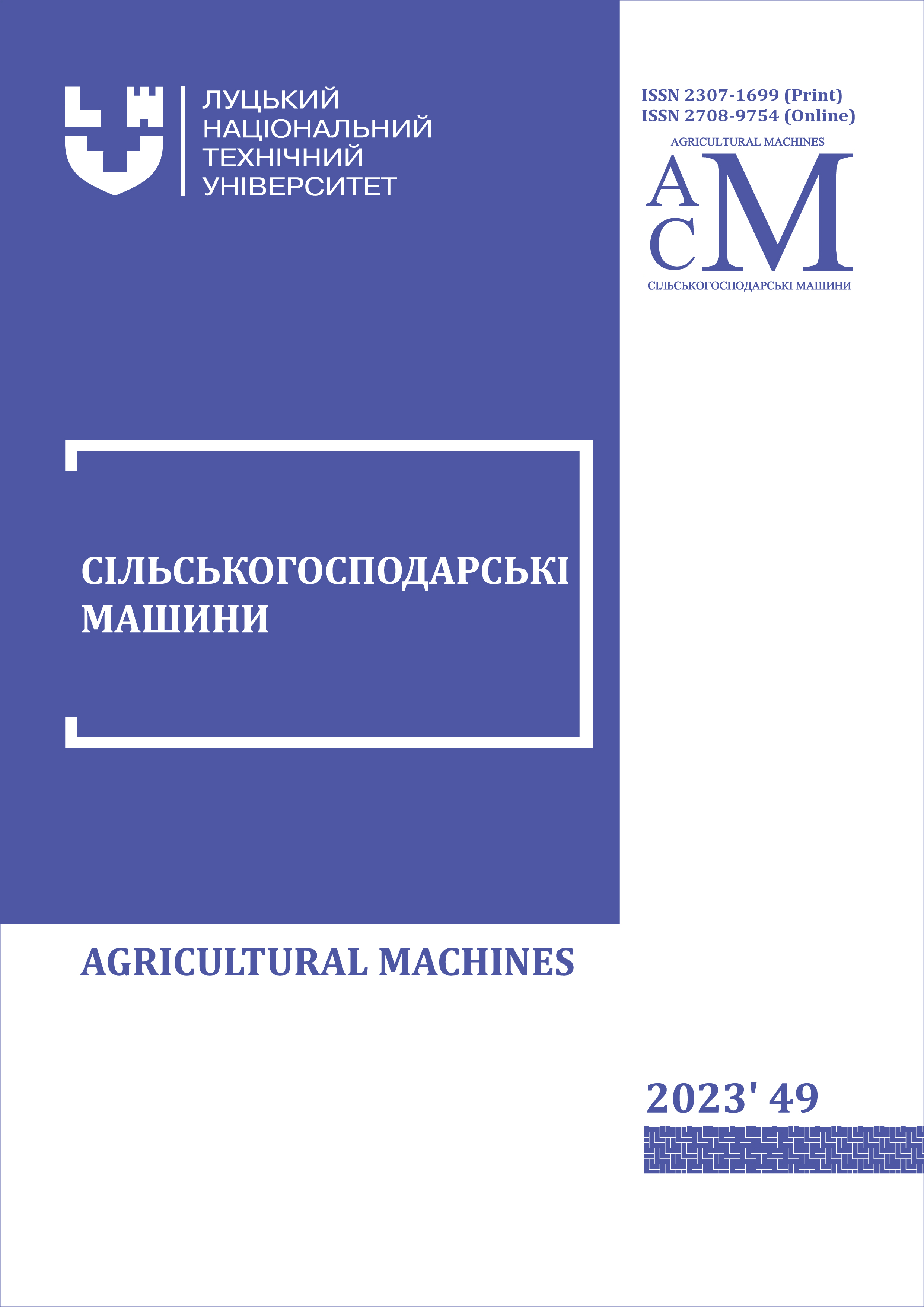MODELING OF GRAIN AND SEED SHAPE TO SUBSTANTIATE OF SEED CLEANER SIEVE PARAMETERS
Abstract
Seed cleaning is the mandatory technological operation of post-harvest processing of agricultural crops. During seed cleaning, trash, seed impurities and other components of the seed mass are separated from the grain/seeds of the main crop. The effective course of seed cleaning depends on the technological parameters of the seed mass and the parameters and mode of operation of the cleaner. Indicators characterizing the efficiency of the seed cleaner are productivity, indicator of seed separation, indicator of seed loss and indicator of seed damage. The technical indicators of the seed cleaner include the specific metal capacity and energy intensity of the seed cleaning process, as well as the degree of sieve surface utilization. The technological indicators of the seed mass are the moisture content and the ratio of mass components. The sieve is the working surface of the seed cleaner, which is characterized, among other things, by the shape and size of the holes and their position. In turn, the choice of the shape and size of the sieve holes depends on the shape and size of the components of the grain mass. It is important to determine the shape and size of the grains/seeds in order to justify the sieve parameters. This paper analyses known methods for the quantitative determination of grain/seed shape. The studies were carried out using a digital microscope and computer software for plotting and area determination of projection images and patterns of grains/seeds. The resulting mathematical models, which include the parametric equations of the ellipse and the modified super formula, describe the shape of the projections of linseed, wheat and maize, buckwheat and soya bean seeds. These mathematical models can be used in the design of sieve work surfaces of seed cleaner. A scheme and equation are also proposed for the determination of a complex indicator, which makes it possible to evaluate the design of any seed cleaner in comparison with other seed cleaners. A comprehensive indicator can be used to evaluate the design of any machines and equipment, as it takes into account all the parameters that affect the efficiency of their operation, and compare them with the best values of these parameters.
References
Cervantes, E., Martín, J. J., Chan, P. K., Gresshoff, P. M., & Tocino, Á. (2012). Seed shape in model legumes: Approximation by a cardioid reveals differences in ethylene insensitive mutants of Lotus japonicus and Medicago truncatula. Journal of Plant Physiology, 169(14), 1359-1365. https://doi.org/10.1016/j.jplph.2012.05.019
Cervantes, E., Martín, J. J., & Saadaoui, E. (2016). Updated methods for seed shape analysis. Scientifica, 2016, 1-10. https://doi.org/10.1155/2016/5691825
Cervantes, E., & Martín Gómez, J. J. (2019). Seed shape description and quantification by comparison with geometric models. Horticulturae, 5, 60. https://doi.org/10.3390/horticulturae5030060
Cervantes, E., Martín Gómez, J. J., Gutiérrez del Pozo, D., & Silva Dias, L. (2019). An Angiosperm Species dataset reveals relationships between seed size and two-dimensional shape. Horticulturae, 5, 71. https://doi.org/10.3390/horticulturae5040071
Cervantes, E., Martín-Gómez, J. J., Gutiérrez del Pozo, D., & Tocino, Á. (2021). Seed geometry in the Vitaceae. Plants, 10, 1695. https://doi.org/10.3390/plants10081695
Cervantes, E., Rodríguez-Lorenzo, J. L., Diego Gutiérrez del Pozo, D., Martín-Gómez, J. J., Janousek, B., Tocino, Á., & Juan, A. (2022). Seed Silhouettes as geometric objects: New applications of Elliptic Fourier Transform to seed morphology. Horticulturae, 8, 974. https://doi.org/10.3390/horticulturae8100974
Gutiérrez del Pozo, D., Martín-Gómez, J. J., Tocino, Á., & Cervantes, E. (2020). Seed geometry in the Arecaceae. Horticulturae, 6, 64. https://doi.org/10.3390/horticulturae6040064
Juan, A., Martín-Gómez, J. J., Rodríguez-Lorenzo, J. L., Janoušek, B., & Cervantes, E. (2022). New techniques for seed shape description in silene species. Taxonomy, 2, 1-19. https://doi.org/10.3390/taxonomy2010001
Martín-Gómez, J. J., Gutiérrez del Pozo, D., Ucchesu, M., Bacchetta, G., Cabello Sáenz de Santamaría, F., Tocino, Á., & Cervantes, E. (2020). Seed morphology in the Vitaceae based on geometric models. Agronomy, 10, 739. https://doi.org/10.3390/agronomy10050739
Martín-Gómez, J. J., del Pozo, D. G., Tocino, Á., & Cervantes, E. (2021). Geometric models for seed shape description and quantification in the cactaceae. Plants, 10, 2546. https://doi.org/10.3390/plants10112546
Williams, K., Munkvold, J., & Sorrells, M. (2012). Comparison of digital image analysis using elliptic Fourier descriptors and major dimensions to phenotype seed shape in hexaploid wheat (Triticum aestivum L.). Euphytica, 190(1), 99-116. https://doi.org/10.1007/s10681-012-0783-0
Дударєв, І. М. (2022). Алгоритм оцінювання придатності рослинної сировини для перероблення за певною технологією (Algorithm for assessing the suitability of plant raw materials for processing according to a certain technology). Сільськогосподарські машини, 48, 100-109. https://doi.org/10.36910/acm.vi48.888
Ольховський, В. О., & Дударєв, І. М. (2021). Способи сепарування та сепаратори зернової маси (Separation methods and separators of grain mass). Сільськогосподарські машини, 47, 102-112. https://doi.org/10.36910/acm.vi47.655
Фоминых, А. В., & Чумаков, В. Г. (2010). Алгоритм расчета процесса сепарации на решетных устройствах (Algorithm for calculating the separation process on screen devices). Аграрный вестник Урала, 7(73), 77-79.











